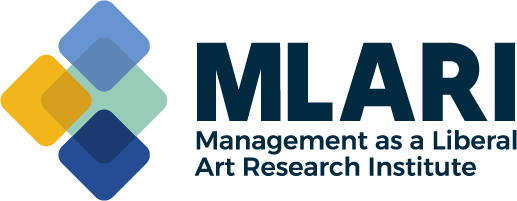Revolutions in Labor Hierarchies
PUBLISHED:
A specter is haunting the world – though this time, the dynamics of labor have shifted to the point where this specter cannot resemble a communist force. If Drucker’s works have been any indication, the rise of the knowledge worker is a first in the history of human productivity. This first has, among many other things, overturned the traditional labor hierarchies that have existed since the rise of agriculture.
For much of history, societal hierarchies and their subsequent conflicts have been demarcated by the fine line between ruler and ruled – master and slave, lord and serf, bourgeois and proletariat, and so on. The commonality between each of these relationships has been that authority and autonomy has been largely allocated to one side – the ruling – and that the literal toil of labor has been the leverage of the other – the ruled. The rulers instructed the ruled on where to direct their labor, while the ruled prevented their rulers from siphoning too much of their earnings. Such a delicate balance, established in the first agrarian civilizations, was often upset, as shown by history’s account of countless peasant revolts and eradicated kingdoms.
In his 1966 essay “The First Technological Revolution and its Consequences”, Drucker established that currently recognizable human lifestyles trace much of their origins back to this first agrarian revolution in affairs. This includes the aforementioned labor hierarchy, which has dictated government policy even into the industrial age. Even through the various industrial revolutions, the evolution of labor only affected the organization of workers, with unions and labor groups giving mass labor a platform to negotiate less violently against their employers. The base demands of labor – better wages, better working conditions – as well as the demands of their employers – more output per head, more efficiency – still belonged to the old ruler-ruled hierarchy, despite the emergence of supposedly modern fixtures of economy like the union.
The rise of the knowledge worker threatens to upend this paradigm. Drucker laid out some basic facts about the knowledge worker that are relevant to dealing with this revolution. First, the knowledge worker is far more autonomous than any other kind of worker in history. Management of labor has depended on power resting largely with authority. Autonomy of the worker significantly shrinks the need for this hierarchy. Second, the knowledge worker’s output is augmented by information technology. Drucker identified this as the computer in his time, but artificial intelligence fits this role as well. In previous times, any labor-altering advancements in technology only created more jobs through economic expansion. The Luddites’ archnemesis, the textile machines dominating Britain and the United States in the early nineteenth century, created a plethora of employment through an explosion of demand for consumer goods. The assembly line that threatened the monopoly of high-cost artisans generated jobs for countless factory workers. All these phenomena were driven by the mechanization of work – repetitive work, that is. Even the replacement of the artisan was the simplification of each step of their work into a repetitive task that any unskilled laborer could replicate. However, all these technologies simply made existing manual labor more efficient by subdividing it - an early application of management theory, but one that still required mass labor regardless.
The development of the computer and AI poses a distinct form of technological automation, in tandem with the rise of the knowledge worker. For the first time, true automation has become a reality. Drucker noted that the computer, and now AI, can dictate and execute decisions that before would have required a human to do. Pairing this with the autonomy of the knowledge worker, we witness the creation of a system that foregoes the historic one-way direction of command for a more reciprocative structure where workers contribute as much feedback to their institutions as their bosses and the only defining difference in authority between either is the extended foresight required to direct the entire company forward.
The United States is in a mixed position to deal with this shift in hierarchy. Historically, it has prescribed all its citizens to be equal and free, however different reality may have been. Individual liberty has been baked into the country’s persona beginning with the Founding Fathers and spanning the defining moments of American history, from the Civil War to the Frontier Thesis of 1890 to the civil rights movement of the 1960s. Thus, the American psyche is better adjusted to welcome the knowledge worker; the view that an American peasant never existed doesn’t exist for nothing. However, other contradictions, such as the centuries-long establishment of slavery and the historic disenfranchisement of particular groups within the United States, will contribute to friction in the transition. If not for being at direct odds with the loosening of hierarchy, these facts will at the very least create tension for the many facets of American society left behind in the deepening dependency on knowledge workers, as has recently been observed with the rise of populism on both wings of the American political spectrum.
Drucker was receptive to such potential reverberations, evidenced by his concerns expressed in his work “The New Productivity Challenge” (1991). He acknowledged that however much of a role knowledge and higher service work would contribute to the American economy, the majority of the population would inevitably be outside this ecosystem, especially given the lack of concentrated education and training available to them. In that particular work he proposed that increases in productivity were crucial in maintaining the economic prosperity to generate the social stability that had prevented the oft-violent revolutions of the past. In consideration of the aforementioned hierarchical shift brought to light, the relationships between employer and employee within management theory are also important in defusing any grievances the denied populace has towards their exclusion from high-concentration work. Although service work has progressed in “employee feedback” since the mid 20th century, dissent among lower-paid service workers has risen, leading to unionization conflicts like those at Amazon and Starbucks as well as large waves of “quiet quitting” that came right after the Covid-19 pandemic.
Given the prevalence of phenomena like these, management theory should heed Drucker’s warnings in advance and evaluate existing practices in employer-employee hierarchies, not only in the knowledge-worker field but in the wider service worker field as well. For if neglected, this issue shall likely boil over and erupt just as the Revolutions of 1848 manifested the specter of the labor crises sweeping Europe. As the modern maxim goes, institutions must truly adapt to having their employees “be their own boss” more than before, for the benefit of employer, employee, society, and the economy.
References
Drucker, P. F. (1966) The First Technological Revolution and its Consequences. Johns Hopkins University Press.
Drucker, P.F. (1991) The New Productivity Challenge. Harvard Business Review.





